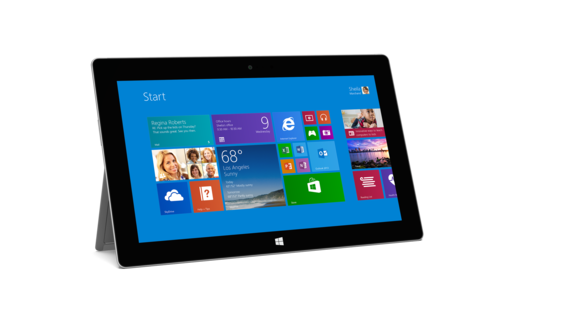Building your own computer is the best way to get a system which will get you what you want. You can decide what components you want and what you don't . It also helps you to save a lot of money. You can always choose the latest components in the market and keep yourself updated with the technology.

In this post I will tell you the best configuration for building your own computer for all the budget ranges. While, this might not be exactly the best, but this will give you a good performance and speed.

This is for people, who just want to browse the Internet, do some word processing. These are best for office related work. But if your office uses applications like Photoshop, or any Video Editing Software like Adobe After Effects, this won't give good performance. Choose this, if you are really in a tight budget and just need a computer for normal work.
Cooler Master Elitie 310
Processor: AMD Anthlon 2 x2 260
Motherboard : ASUS M5A78L-M LX
RAM: Corsair Desktop RAM 2GB DDR3 1333 MHz
HDD: Seagate 1TB
Monitor: BenQ G610HDAL
Graphics Card: None
Cabinet : Cooler Master Elite 310
PSU: FSP Saga II 400W
Speaker: Altec Classic Audio BXR1221
Mouse: Zebronics Judwas 5
Keyboard: Zebronics Judwas 5
Optical Drive: LG 22x SATA DVD Writer
Sound Card: None
You can choose the speakers, mouse, keyboard as you wish, but keep the heart of the system same.
Basic Rig

This is for people, who just want to browse the Internet, do some word processing. These are best for office related work. But if your office uses applications like Photoshop, or any Video Editing Software like Adobe After Effects, this won't give good performance. Choose this, if you are really in a tight budget and just need a computer for normal work.
Cooler Master Elitie 310
Processor: AMD Anthlon 2 x2 260
Motherboard : ASUS M5A78L-M LX
RAM: Corsair Desktop RAM 2GB DDR3 1333 MHz
HDD: Seagate 1TB
Monitor: BenQ G610HDAL
Graphics Card: None
Cabinet : Cooler Master Elite 310
PSU: FSP Saga II 400W
Speaker: Altec Classic Audio BXR1221
Mouse: Zebronics Judwas 5
Keyboard: Zebronics Judwas 5
Optical Drive: LG 22x SATA DVD Writer
Sound Card: None
You can choose the speakers, mouse, keyboard as you wish, but keep the heart of the system same.
Entry Level Gaming

This is for gamers who have a small budget but still want to enjoy games. With this specs you will be able to run games like Call of Duty Series and other graphics intensive game. But you have to keep your settings at a minimum level or you might suffer from decreased FPS. And less FPS is a bad thing! Really a bad thing!
AMD A6-3650
Processor: AMD A6-3650
Motherboard : Gigabyte GA-A55M-DS2
RAM: G-skill F3-10600CL9S- 5GBNT
HDD: Seagate 1TB
Monitor: BenQ G2222HD
Graphics: ASUS 550Ti
Cabinet : Cooler Master Elite 310
PSU: Corsair CX340
Speaker: Altec Lansing V2621
Mouse: Zebronics Judwas 5
Keyboard: Zebronics Judwas 5
Optical Drive: LG 22x SATA DVD Writer
Sound Card: None

Mid-Range Level

So, you have a considerable budget and want to go for not the ultimate but, play games at medium graphics without decreasing FPS. Here's what you need.
Intel Core i5-2400
Processor: Intel Core i5-2400
Motherboard : MSI-H67-e35
RAM: Corsair CML8GXM2A1333C9
HDD: Seagate 1TB
Monitor: BenQ G2222HD
Graphics Card: Zotac nVidia 560
Cabinet : Cooler Master Elitie 340
PSU: Seasonic S12 II 520
Speaker: Altec Lansing V2621
Mouse: Razer Abyssus
Keyboard: Razer Cyclosa
Optical Drive: LG 22x SATA DVD Writer
Sound Card: None

Ultimate Configuration

Only for people who are absolutely crazy about gaming and want to play the latest game with full maximum settings. This will truly give you a amazing gaming experience. If you have lots of money laying around and you can't think of anything better, go for it.
Processor: Intel Core i7-2600
Motherboard : Gigabyte Z77X-UD5H
RAM: Gskill F3- 12800CL9D- 8GBXL
HDD: 2x Seagate 1TB + OCZ 2.5 SSD VTX3- 25SAT3-120G
Monitor: BenQ XL2410T
Graphics Card: ASUS nVidia GTX 680 2GB
Cabinet : Cooler Master HAF922
PSU: Seasonic X850 (80 + Gold)
Speaker: Logitech Z506
Mouse: Logitech G9x
Keyboard: Logitech G510
Optical Drive: LG 12x Blu-ray OEM RW
Sound Card: ASUS Xonar DX 7.1
Processor: Intel Core i7-2600
Motherboard : Gigabyte Z77X-UD5H
RAM: Gskill F3- 12800CL9D- 8GBXL
HDD: 2x Seagate 1TB + OCZ 2.5 SSD VTX3- 25SAT3-120G
Monitor: BenQ XL2410T
Graphics Card: ASUS nVidia GTX 680 2GB
Cabinet : Cooler Master HAF922
PSU: Seasonic X850 (80 + Gold)
Speaker: Logitech Z506
Mouse: Logitech G9x
Keyboard: Logitech G510
Optical Drive: LG 12x Blu-ray OEM RW
Sound Card: ASUS Xonar DX 7.1

Please tell us about your computer's configuration. If you have any other suggestions please tell us through the comments!




 03:36
03:36
 ram
ram









































